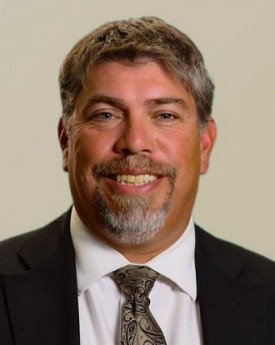How a Rural Hospital Used Health IT, EHR to Stay Independent
A cloud-based EHR and medical billing solution allowed a rural hospital to improve its healthcare revenue cycle and remain independent in the face of consolidation pressure.

Source: Thinkstock
- In a time of declining claims reimbursement rates and value-based care, rural hospitals are struggling more than ever to improve their healthcare revenue cycle management strategies. For many rural hospitals, the decision oftentimes comes down to merging with a larger entity or closing their doors.
Seventy-eight rural hospitals closed since 2010 because of uniquely rural healthcare revenue cycle challenges, CMS reported in October 2016. The former Acting Administrator Andy Slavitt pointed out that rural hospitals more often than not operate with razor-thin margins and higher uncompensated care costs while facing fewer private payer options and lower utilization rates.

A 14-bed critical access hospital in Idaho, however, recently beat both hospital merger and closure odds by investing in cloud-based health IT solutions to improve their healthcare revenue cycle management strategies.
“If a small hospital wants to survive moving forward, they are going to have to embrace a lot more technology,” Brad Huerta, Lost Rivers Medical Center’s CEO, recently told RevCycleIntelligence.com.
When he joined Lost Rivers Medical Center four years again, the hospital faced serious financial and technological struggles. The hospital still used a 1993 EHR system, causing medical billing and clinical processes to slow to the point where the average number of accounts receivables days was at 108 days.
READ MORE: Preparing the Healthcare Revenue Cycle for Value-Based Care
Huerta described the hospital’s situation as turning the clock back 20 years.
“We didn’t have wifi,” he said. “We didn’t have fiber. We literally had copper wires for our phone system. When I got to the hospital, we had an EMR in a technical sense, but nobody was using it. It was a proverbial paper weight.”
“We were coming from the dark ages from a technology sense,” he added.
Lost Rivers Medical Center’s technological position was not unique for a small, rural hospital. A 2015 Health Affairs study revealed that almost one-third of critical access hospitals did not have the most basic of EHR systems by 2014 to manage foundational functionalities, such clinical notes, lab and radiology reports, discharge summaries, and prescription order entries.
While hospitals across the size range cited financial burden as a significant EHR adoption challenge, smaller hospitals were more likely to cite ongoing financial difficulties. The financial burden associated with EHR adoption and health IT implementation prevented some small hospitals from investing in the capabilities.
READ MORE: Rural Hospitals Address Medicare Reimbursement Cut Concerns
Not only a critical access hospital, but also considered a frontier hospital, Lost Rivers Medical Center encountered similar problems. The hospital’s remoteness made recruiting IT staff difficult and the cost of implementing a comprehensive EHR system could include expensive infrastructure upgrades, staff, and server maintenance.
With less patients coming through the door compared to other rural hospitals, Lost Rivers Medical Center did not have the revenue or staff time to lose over health IT and EHR adoption projects.
But some value-based reimbursement models that require EHR and other health IT for reporting and payment leave some critical access and rural hospitals with their hands tied when it comes to implementing the appropriate technologies.
For example, the CMS-run EHR Incentive Payment Program started to negatively adjust Medicare payments to hospitals in 2015 if they failed to attest to meaningful use of certified EHR technology. Huerta explained that the hospital needed at least an EHR upgrade for meaningful use attestation as well as care quality improvements across the care continuum.
Value-based reimbursement changes under MACRA may also exacerbate rural healthcare revenue cycle problems, leading many hospitals to merge with larger organizations. For example, the Quality Payment Program, which replaced the meaningful use initiative earlier this year, will also include certified EHR use as a performance measure in the Merit-Based Incentive Payment System.
READ MORE: OIG: Provider Support, Health IT Needed for MACRA Implementation
A July 2016 survey from the Deloitte Center for Health Solutions also found that many providers are not confident that their organizations have the necessary data analytics and health IT capabilities to succeed under the Quality Payment Program.
To gain access to the necessary capabilities and shoulder the financial risk requirements, about 58 percent of surveyed providers said they would consider merging with a larger healthcare organization. Another 80 percent stated that they believe the financial pressures under the Quality Payment Program will drive more healthcare mergers.
“As long as you have a helipad to transport patients to bigger systems, you cease to be an innovator in healthcare.”
The Idaho-based critical access hospital, however, strived to remain independent. The hospital’s CEO described the organization as “stand-alone” and “fiercely independent,” which contributed to the hospital’s philosophy that merging with a larger organization would reduce essential healthcare access in the Rhode Island-sized hospital district.
“There is a big fear, real or imagined, I personally think that it’s real, of companies who are affiliating with rural hospitals not seeing the value of maintaining a rural healthcare presence in a real sense,” Huerta said.
“In some cases, leaders or services that don’t make a certain amount of margin or contribution margin are cut out regardless of whether or not they fulfill a community need or benefit,’ he continued. “You lose control of your ownership and all of a sudden, your facility eventually becomes a bandage station out in the middle of nowhere. As long as you have a helipad to transport patients to bigger systems, you cease to be an innovator in healthcare. Instead you just become an organization that packages up patients and sends them out if it is anything other than stitches.”
The rural hospital feared that losing their independence would mean giving up the gains they’ve made in terms of services. For example, Lost Rivers Medical Center not only has a trauma designation as a critical access hospital, but it is the first hospital in Idaho to implement a tele-pharmacy program.
To maintain their independence, Huerta acknowledged that the hospital needed to improve its revenue cycle to continue being a healthcare innovator. A comprehensive EHR system and more advanced health IT implementation was necessary to keep the hospital doors open as an independent entity.
After installing fiber in the hospital area, Huerta decided to implement athenahealth’s cloud-based EHR system and medical billing solutions. The products not only allowed for clinical and financial data to be located in the same platform, but the cloud-based aspect of the solutions saved the hospital money.
“To be able to have a completely web-based system meant I didn’t have to hire an army of IT guys and I didn’t have to have a server farm in my hospital,” he explained. “The only thing harder for a critical access hospital to recruit other than a doctor is an IT guy. For us, it made sense from the operational side, but it also made financial sense.”
The cloud-based and data integration features were also key to helping the hospital realize revenue cycle improvements. After implementation, the hospital streamlined clinical and medical billing processes to improve total cash flow by 119 percent compared to the first quarter of 2016. Days in accounts receivable also went from over 100 days to around 52 days.
Huerta attributed the rural hospital’s revenue cycle improvements to the newfound ability to chart anywhere in the facility. Prior to recent EHR replacement and health IT implementation, he explained that oftentimes providers and staff did not code services correctly or bill the patient correctly. The errors as well as the increase in administrative duties resulted in lost revenue.
“We can still do better, but what we’re seeing is that we are able to capture charges in real-time at the bedside,” he stated. “We are no longer leaving money on the table.”
“Now my doctors spend more time doing healthcare opposed to trying to write stuff out on paper or on word processors,” he continued. “They can chart on their phones, tablets, or laptops. They can chart in the actual patient rooms.”
As a result, providers became more efficient with charting and more accurate, Huerta elaborated. Accurate charts are especially important since one of the most common reasons for a claim denial is missing information, a 2013 Medical Group Management Association report stated.
By giving providers the ability to chart on the go or even in the patient room, the solutions also spared caregivers from spending as many as two to three hours a day on administrative work. Huerta viewed the reduced administrative burden on providers as a revenue generator because providers now had more time to see more patients.
“We’re getting all the benefits of being in this network of hospitals, but we’re still independently owned and operated.”
Additionally, the cloud-based EHR and medical billing solutions enabled providers and other staff members to access clinical and financial data across the care continuum, resulting in revenue boosts.
“Now we have the clinic, emergency room, purchasing, lab, imaging, and all of the finances tied together,” he continued. “If you touch one part of the patient’s record, it populates across, so you’re not missing or duplicating anything.”
The products also connected the independent rural hospital to larger health systems with more resources without threatening its independence. Lost Rivers Medical Center gained access to the most up-to-date and accurate codes without having to spend money on extensive coder and biller training or sending their few billers off for more education.
“We’re getting all the benefits of being in this network of hospitals, but we’re still independently owned and operated,” he said.
“When you have billing, code, DRG [Diagnosis Related Group], or modifier changes, as soon as any hospital in the athenahealth system captures the change, it populates in their rules engine,” he elaborated. “That goes across the systems. Our billing capacity has gotten far more robust.”
Healthcare employment challenges, such as provider retention, staff recruitment, and inefficient workflows, also improved after implementing a new EHR and medical billing system.
Even though 20 percent of Americans live in a rural area, only 10 percent of physicians practice in those regions, CMS reported in October 2016. Practicing in the midst of a healthcare professional shortage may cause providers across the care continuum to take on more responsibilities, making workflows inefficient.
New health IT advancements at Lost Rivers Medical Centers, however, allowed providers to do what they were trained to do.
“If you ask any doctor why he or she got into medicine, the stock answer is ‘I want to help people,’” said Huerta. “But what we’ve done as an industry is drive a technology wedge between providers and their patients.”
The cloud-based solutions were crucial to removing the technology wedge that prevented providers from seeing patients because of administrative burdens. Healthcare staff across the hospital, not just providers, no longer had to take on as many responsibilities outside of their primary duties. With the appropriate employees doing the appropriate tasks, workflows can become more efficient.
While Huerta encouraged small and rural hospitals to embrace health IT, his hospital’s case may serve as a good example of how implementing the right solutions is key to realizing hospital revenue cycle improvements and remaining independent.
Lost Rivers Medical Center’s push to stay on the cutting edge, especially as a critical access hospital, led to health IT and EHR implementation projects that advanced care quality through data integration, improved revenue through more accurate charting and billing, and made provider workflows more efficient.
But providers and staff did not necessarily feel like the health IT was a roadblock to providing care as they did with the old EHR system. The more intuitive and convenient cloud-based solutions made providing high-quality care easier.
Huerta concluded, “Anytime you can make our job easier, health gets better. Access gets better. Quality gets better. Satisfaction gets better.”
